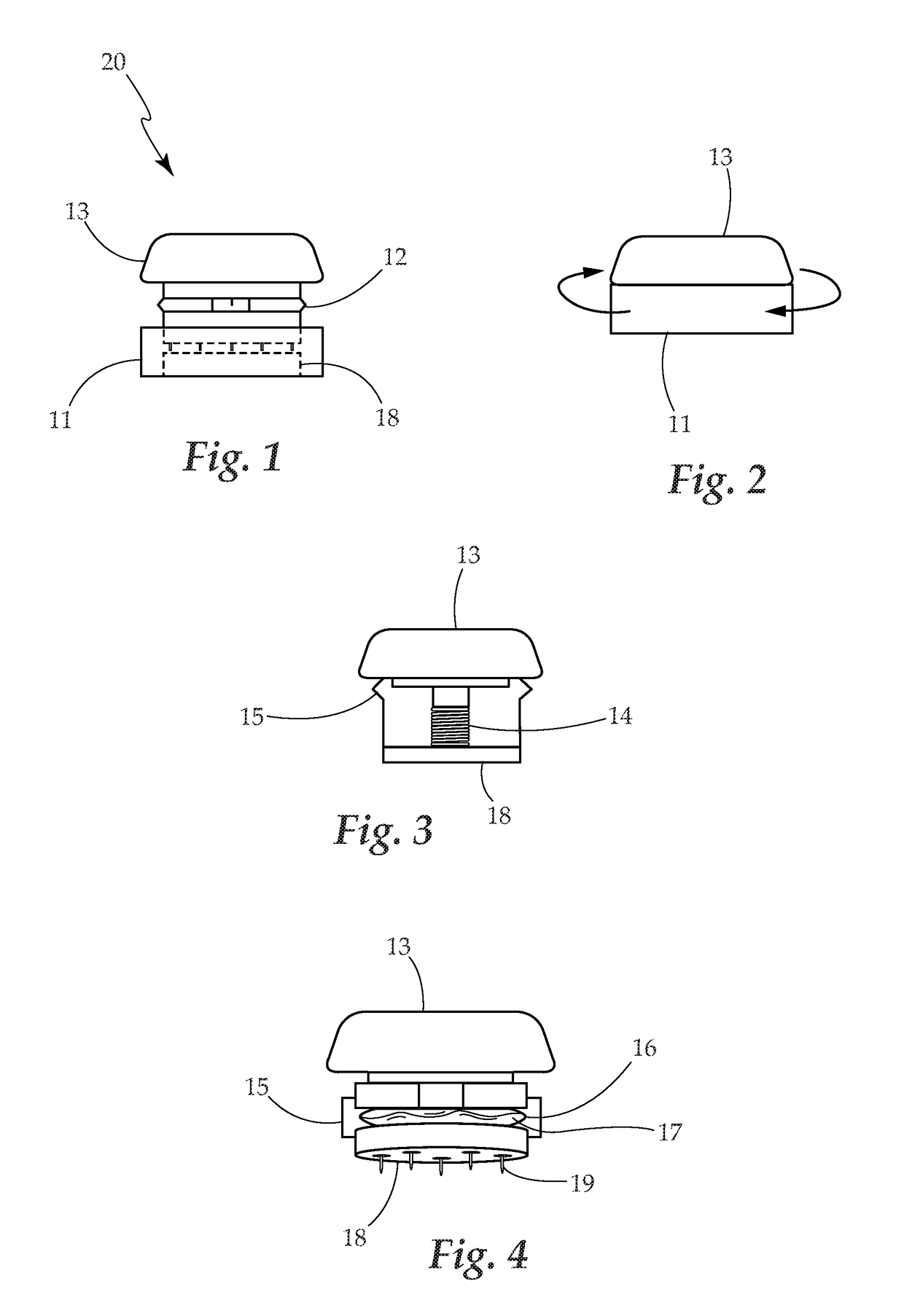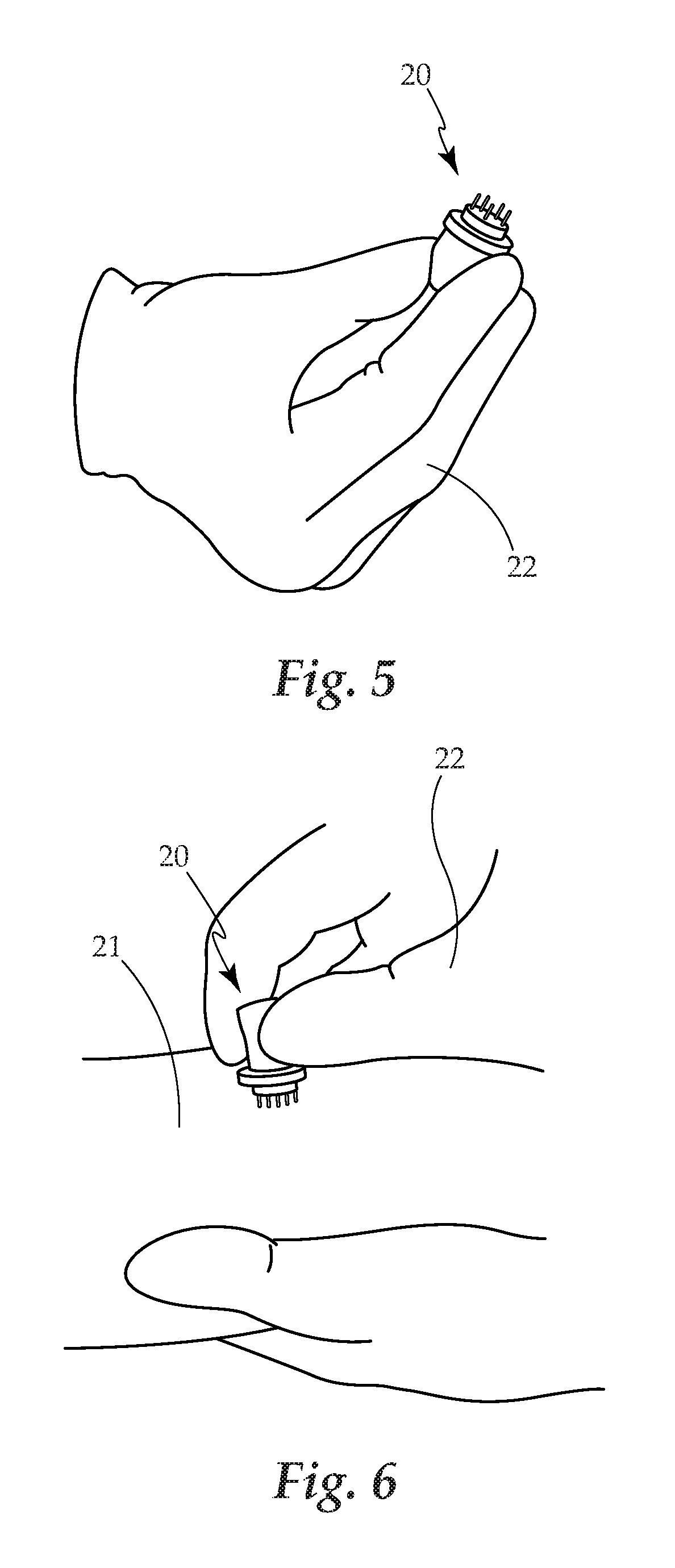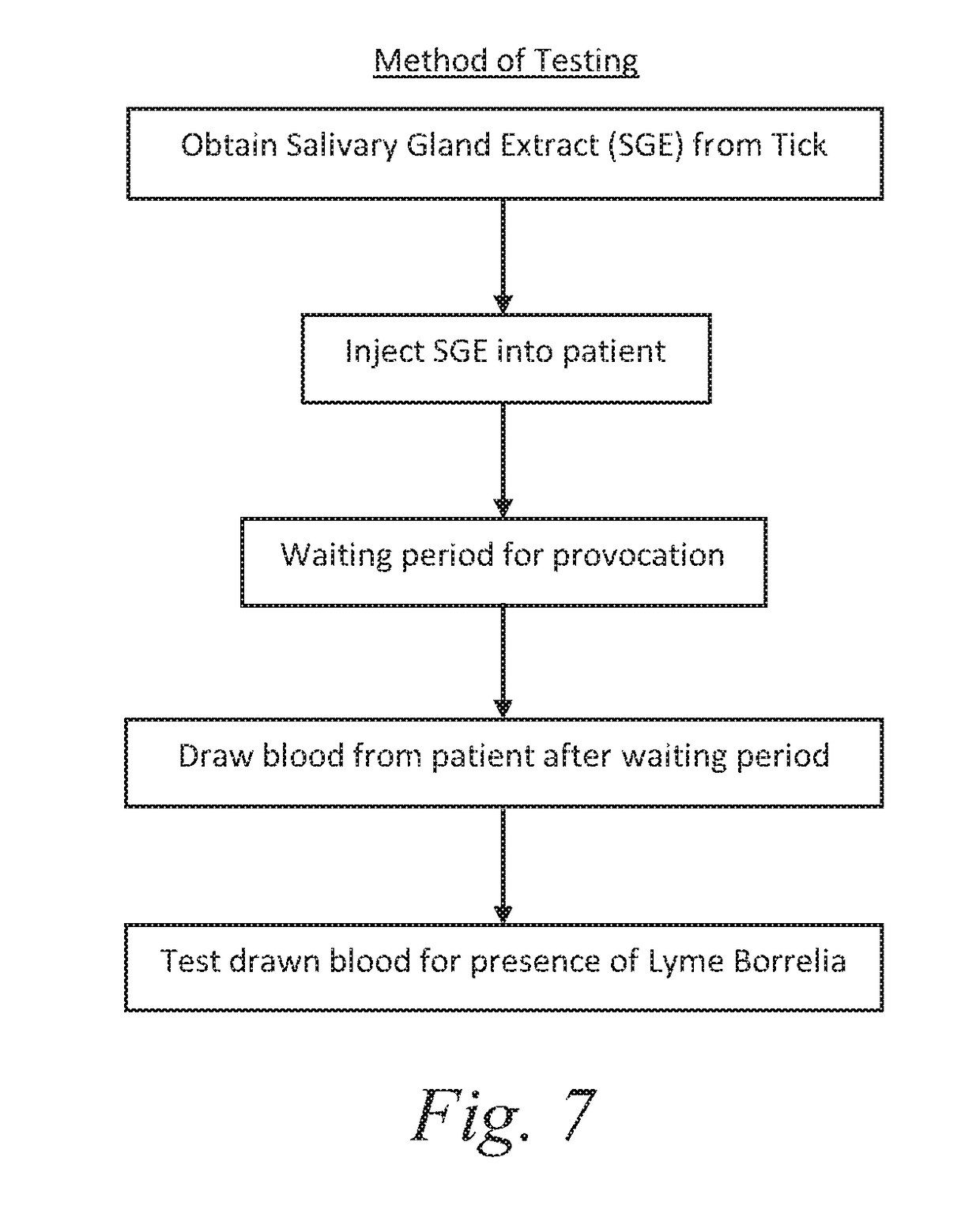Borrellia provocation procedure protocol
a provocation procedure and protocol technology, applied in the field of human and animal diagnostic and treatment procedures for lyme disease pathogens, can solve the problems of insufficient reliability of test results, substantial alteration of normal behavior of these sensitive spirochetes, and the least invasive and most economical way of lyme testing is using blood, so as to achieve timely and effective treatment, effective treatment procedures, and the effect of creating treatment effectiveness
- Summary
- Abstract
- Description
- Claims
- Application Information
AI Technical Summary
Benefits of technology
Problems solved by technology
Method used
Image
Examples
embodiments of invention
[0094]A. Embodiments may be used to enhance the detection of Lyme disease in humans at any stage of the infection.[0095]B. Embodiments may be used to enhance the detection of Lyme disease in animals. This utilizes the same processes as described for the human model.[0096]C. Embodiments may be used in the treatment of Lyme disease and its associated co-infections. Through the use of the BPP to move more of the spirochete pathogen into the blood and surface tissues, as it makes the pathogen more bio-available for easy eradication through antibiotic use.[0097]D. The present invention is described by reference to an example. The use of this and other examples anywhere in the specification is illustrative only, and in no way limits the scope and meaning of the invention or of any exemplified form. Likewise, the invention is not limited to any particular preferred embodiments described herein. Indeed, modifications and variations of the invention may be apparent to those skilled in the ar...
PUM
 Login to View More
Login to View More Abstract
Description
Claims
Application Information
 Login to View More
Login to View More - R&D
- Intellectual Property
- Life Sciences
- Materials
- Tech Scout
- Unparalleled Data Quality
- Higher Quality Content
- 60% Fewer Hallucinations
Browse by: Latest US Patents, China's latest patents, Technical Efficacy Thesaurus, Application Domain, Technology Topic, Popular Technical Reports.
© 2025 PatSnap. All rights reserved.Legal|Privacy policy|Modern Slavery Act Transparency Statement|Sitemap|About US| Contact US: help@patsnap.com



